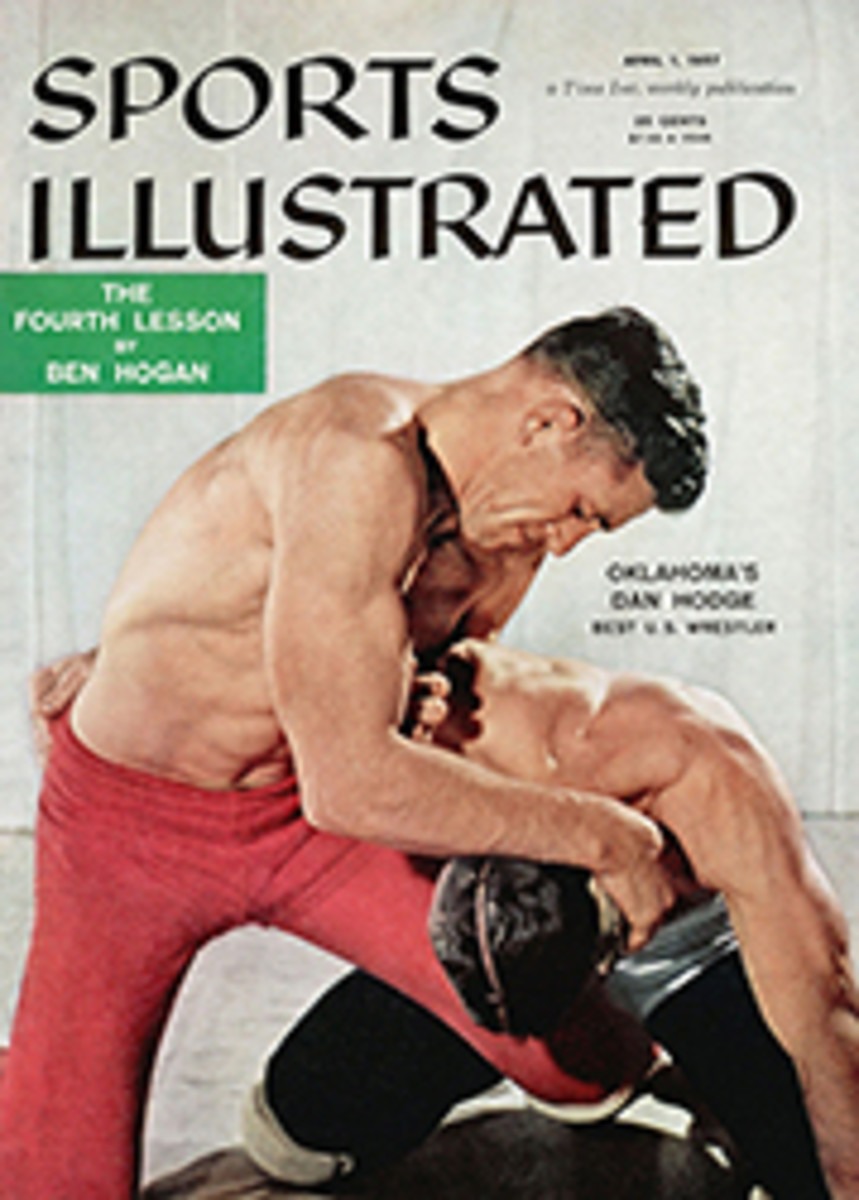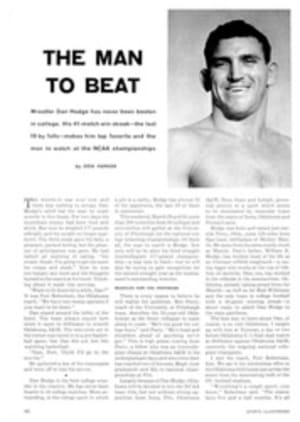
FOOTBALLS AWEIGH
Spreading back from the banks of the Severn, where the river waters roil Chesapeake Bay, there is a plain which comes alive each spring, jarred from winter's lethargy by the thud and shock of padded bodies contacting with sudden force and by the violent sounds of young men playing hard at football. This place is called The Flats. It is where the U.S. Naval Academy builds each spring for the coming football season. At Annapolis, as at most other colleges, football fortunes are formed during such pleasant spring rehearsals more than at any other time. So it is that gridiron tableaux such as those of the Navy's spring practice which appear on the next two pages are commonplace sights on most campuses during March and April (or even February in warmer climates). It is a time when coaches train their sharp eyes on raw material and weigh the potential of new prospects against the performance of last year's stars. It is a time when the rookie gets his chance to make the varsity and when veteran players learn that press clippings do not cover up missed tackles and sloppy blocking. It is a time of year when football teams are born.
Though spring practice generally is accepted as an integral part of modern college football, it has in the past come under attack from some lofty educational sources. The Ivy League, as a result of a joint decision by the presidents of the group, abolished spring football in 1951 on the ground that it lent too much emphasis to an already overemphasized sport. As Robert Hall, then director of athletics at Yale, put it at the time: "The decision to give up spring practice is a part of a long-range study of all out-of-season athletic schedules, the purpose of which is to adjust those schedules in the best interest of the players."
Now, six years later, the Ivy League is not so sure it was right. Some outspoken representatives of the eight-school group, including Bob Blackman, head coach at Dartmouth, believe there is a real need for spring practice.
"Football has now become a tremendously complicated game," he says. "Not only are there as many fundamentals, techniques and body skills involved as in any other sport, but also there is an amazing amount of mental work required in learning how to adapt each play to any one of a dozen different types of defense. It doesn't seem quite logical that in the Ivy League the men out for crew can work for nine months of the year, the men out for track run cross-country in the fall, indoor track in the winter and outdoor track in the spring while the most involved sport [football] is allowed the least amount of practice time."
Bud Wilkinson, one of the most successful coaches in U.S. college football with a 40-game winning streak now going at Oklahoma, points out that abolition of spring practice tends to encourage greater abuses in the college football program. He says: "The biggest problem in collegiate athletics is recruiting, not spring football. The more you limit spring practice, the more dependent schools become upon the gifted athlete, the high school boy who can already play the game well. Thus, by eliminating practice sessions in which the normal boy, by diligent effort, could learn to play almost as well as the gifted athlete, we add to the pressures of recruiting."
Eddie Erdelatz, head coach at Annapolis, belongs to that 98% of the college football world which believes in spring practice. He devotes it to drilling, shapes his athletes in an atmosphere of relaxed hard work. He trains 120 midshipmen in the fundamentals of football, and if they find it a chore, the fact is cleverly concealed.
Each fair afternoon for 20 days during the spring the Middies head eagerly for The Flats. The place reverberates with the war cry of Navy. It is a savage cry that begins with the snap of the ball, and it translates the effort of blocking and tackling into sound. All Navy players are taught this cry. It tightens their bellies, makes them less vulnerable. It also unites them. It makes them a team. These midshipmen play hard first of all because they know their performance now will decide whether they play at all later. But they also play hard because they think the game is fun and the atmosphere is enjoyable. Occasionally a small sailboat will come close by the breakwater and they will pause and gaze critically at her trim because they are sailors. And occasionally the skipper—Admiral William Smedberg, superintendent of the academy—will show up in a football parka and do a little friendly kibitzing. There is no pressure. These youngsters play for the exultation of having made a good, clean, hard tackle; for the thrill of breaking away for a long run or for the satisfaction of throwing a critical block. They are not there because they were told to be there, but because they want to play football.
Looking at them, Erdelatz says: "No one is denied the right to play football here. Why deny a football player the fun of the game? I don't have one boy on my squad who is told he has to come out. They come out because they love the game and want to play it in spring as well as fall."
TWO PHOTOS
RICHARD MEEK
Spring colors the air as Navy jayvees and plebes work out on Hospital Point (above) and on Farragut Field (below). It is a time for casual, relaxed exercise as winter muscles slowly take on outdoor tone; in the background the Severn River lends the proper note of easy motion
TWO PHOTOS
RICHARD MEEK
Legs are heavy after the long layoff, and the varsity works painfully under the eye of Commander John Drew (above center), the officer representative of football. Below: the varsity listens very seriously as Coach Eddie Erdelatz lectures on the intricacies of football, Navy style

